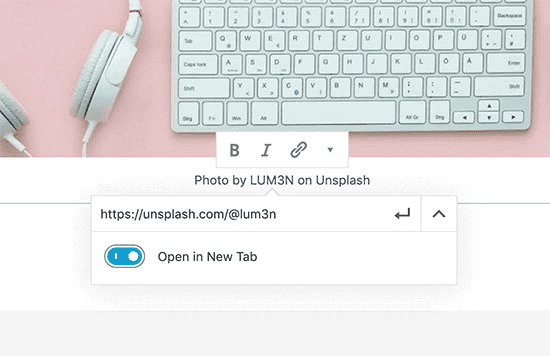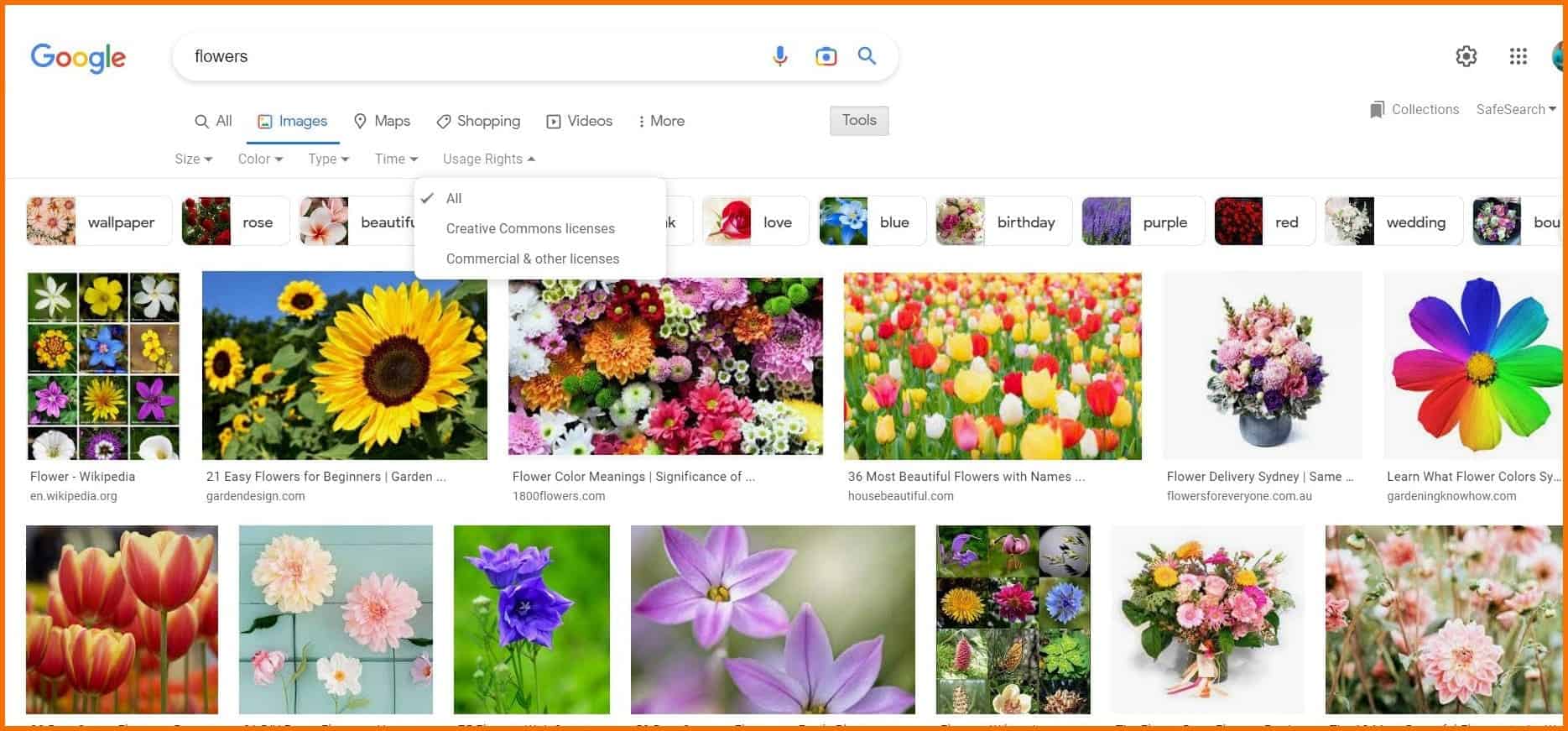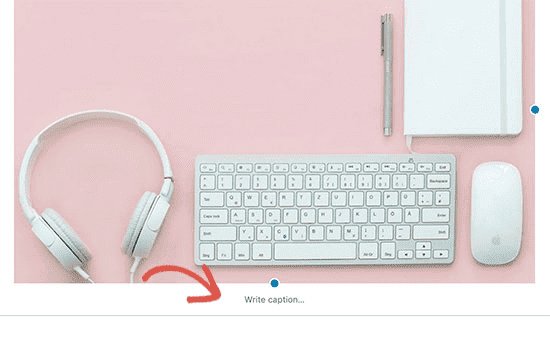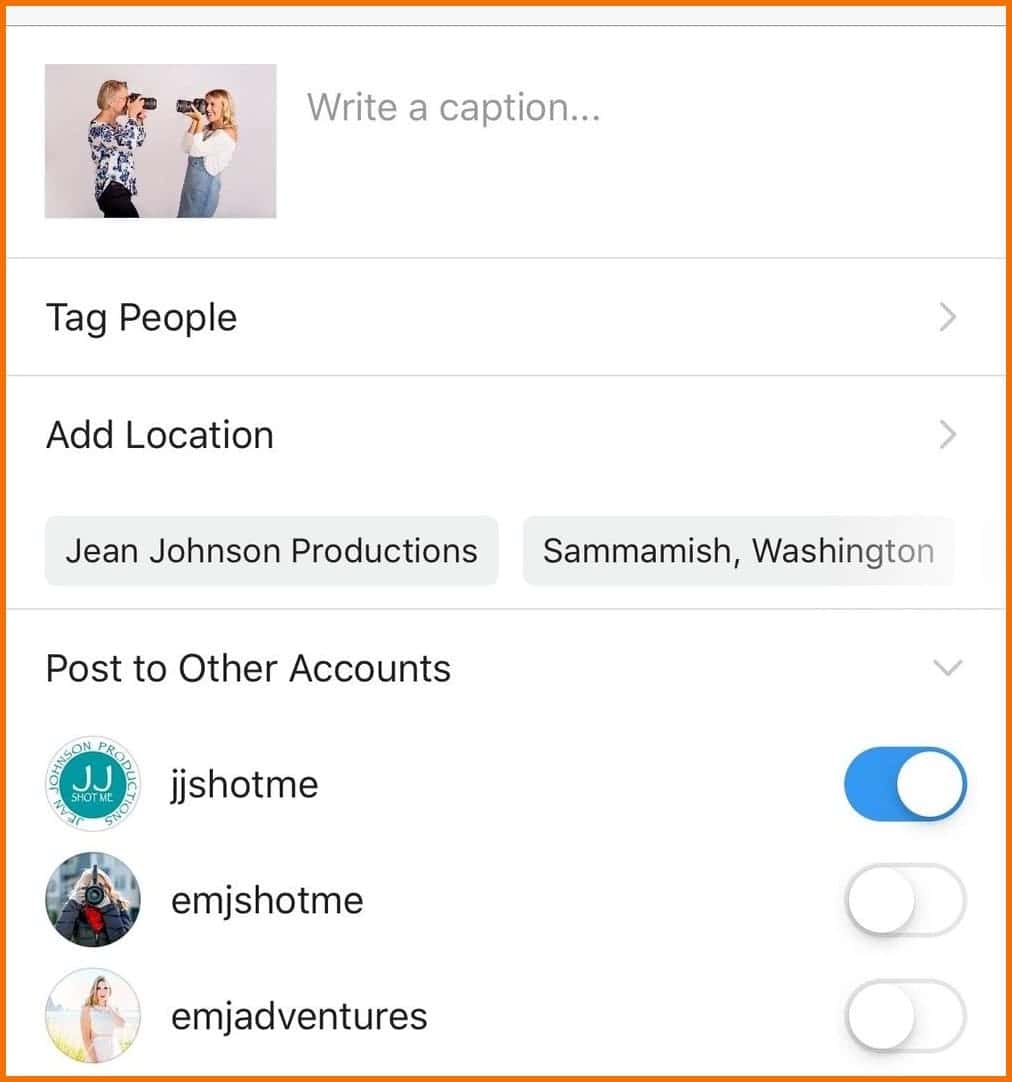When you upload a picture to your blog or social media page, what steps do you take? Most of us upload the image without checking the photographer’s credentials.
If it’s post-worthy, we post it. That said, is it ethical?
Given that we did not own the picture and that it was obtained from a third party, we are obligated to provide a ‘photo credit’ to prove that we are not using stolen images.
But is it required that we provide attribution for every picture we post?
How exactly should it be done?
This blog post holds the answer to these questions and so much more:
- What’s a photo credit?
- The 101s of photo credits
- The variations/types of image credit licenses
- The steps to give copyright credits for images properly
- The importance of giving photo credits
- Misconceptions concerning social media photo attribution
Let’s dive right in!
Table of Contents
What Is a Photo Credit?
Photo credit is a brief statement that identifies the author of a published photograph.
In other words, If we use an image that is not ours, we must give that person due credit, recognize that we have used their photo, and mention the source.
Photo Credits 101: The Basics
Before moving on to the nuances of providing proper photo credit, it is important to know:
- The types of images we can share
- What a photo credit line is
- Where it should be placed
Types of images we can share
The Internet is a pool of various graphics, and all these images have an attached license to them, which determines the correct way to give the photo credit. Not every image on the internet can be used without restriction. Different licenses accompany the images, and those licenses specify how the pictures can be used.
- If an image has a Creative Commons license, you are free to use it. Certain YouTube videos that are accessible under the Creative Commons license may be used in any of your projects with some restrictions. Whether or not you cite the image’s original creator is entirely up to you.
- The Creative Commons license does not apply to all images, photos, or videos; in order to post a photo from a website, you must get the photographer’s permission.
- You can download an image for free from certain websites, such as Unsplash, Pexels, Pixabay, or Wikimedia Commons, but you must provide proper credit to the photographer.
Before moving on to how to give proper photo credit, it is important to know what a photo credit line is and where it should be placed.
Photo credit line
For photographs used in publications or on websites, a picture credit line indicates the photographer, illustrator, or copyright holder.
The photo credit line may be included in the caption or another section of the page, either next to or below the photo.
Photo credits are frequently written or listed in a precise order per the publication’s style guide.
If you’re using an image from a professional photographer, it’s even more important to ensure proper attribution and respect for their work and effort. Professional photographers and copyright holders frequently request certain text or give model language to accompany their provided images or visuals. A link to the photographer’s website or to another source may be necessary or advised for fair use on the web.
Read also: How And When To Say ‘My Sincerest Apologies’
Photo line placement
Normally, the photo credit is shown next to the picture, either underneath it or along one of its borders. One image credit is adequate if more than one image taken by the same photographer is included. If no style is supplied, place a small, sans-serif typeface up the left or right side of the image.
If the photo is used as a full bleed — meaning it reaches over the edge of the paper or website — place the credit line inside the image, close to the edge, at a slightly larger size. In this case, it might be necessary to invert the image in order to make the credit line readable. If it cannot be read, it does not count.
Read also: Five-Star Reviews: What Does It Take to Get High Marks from Your Audience?
The Different Types of Image Credit Licences
You might have come across various forms of image credits, including the infamous ‘All Rights Reserved.’ Let’s check out some of the commonly used photo credits.
Creative Commons: Creative Commons license, or CC, is designed to give the creators the flexibility to choose how others share their content by specifying the permissions others have regarding their work – the ability to use, modify, or share commercially. There are various types of Creative Commons licenses. We’ll share some of the Creative Commons Attributions without going into details:
-
- Attribution (CC BY): This license allows others to copy and distribute both the work and derivative works but with source attribution and acknowledgment.
- Attribution-ShareAlike (CC BY-SA): Others can build upon and modify the content, even for commercial purposes, but with proper attribution and acknowledgment of the copyright owner.
- Attribution-NoDerivs (CC BY-ND): Creators can redistribute commercially and non-commercially as long as the work is unchanged and redistributed in whole with credits to the owner.
- Attribution-NonCommerical (CC BY-NC): Others can modify and build upon the content non-commercially and acknowledge the author.
- Attribution-NonCommercial-ShareAlike (CC BY-NC-SA): Others can modify and build upon the work non-commercially as long as they credit the author (including licensing new creations under identical terms).
- Attribution-NonCommercial-NoDerivs (CC BY-NC-ND): This is the most restrictive Creative Commons license, letting others share the work as long as they credit it to the original author. The content can’t be changed or modified in any way, and it can’t be used commercially.
Copyright: Often shown using the copyright ‘©’ symbol, Copyright refers to the right to:
-
-
- Distribute / Redistribute the work
- Make copies of the work
- Display the work
- Make derivatives based on the original work (through modifications, etc).
-
All Rights Reserved: This term shows users and potential users that they can use the particular work only if they received permission from the owner directly, i.e., the owner with all the rights reserved for the work.
Some Rights Reserved: This term shows the users that the owners have various choices regarding protecting their work.
Fair Use: This term means that the content (photo, image, etc) can only be used for research, personal, or educational purposes – meaning it has to benefit the public.
Public domain: Public domain means the content is not subject to copyright or other legal restrictions, and this can happen if the owner passes away or abandons all the rights – and is often called ‘relinquishment of rights’.
Read also: Master Google Advanced Image Search: Tips and Tricks
How Should You Provide Copyright Credit for Images?
The many methods for giving photo credit for each type of image are as follows:
For images devoid of copyright: If you cite the source and give credit as follows, you may use images without copyright:
- This photo was provided by [Photographer name] via [Source link]. Copyright-free
Regarding photos with copyright: Obtaining the photographer’s consent is the first need for copyrighted images, followed by giving them credit. To give them credit, just include a link to their original source. This ensures that you’re not using stolen images.
A news source’s screenshot: Use the following method to give attribution to any photos you use from a news source
- Photo: [Source] — The website where the image was published.
A picture or photo was acquired from a government agency: If you utilize one of a government institution’s photos or images, all you have to do to give credit is specify the department or agency from when you acquired the image.
-
- Photo: [Source]
The following image was taken from commercial enterprises: If you utilize one of the large company’s photographs, how do you give them credit? It is just simple.
-
- Photo: [Source]
How do you give photo credits in WordPress?

WordPress is a blogging platform that enables users to publish their own text as well as provide rapid access to and use photos for their social media posts.
In order to “avoid content theft” in such cases, WordPress advises content creators to include a clear copyright notice on their website that includes their complete name, the name of their site, and the current year. They also advise posting a statement of rights in the sidebar or footer. In order to protect images, they also follow the DMCA method.
WordPress recommends getting the owner’s permission before using their content/image.
It is also recommended to include the photographer’s name and a link to their website or other online portfolios if you can find one. The picture credit should be directly under the image. Remember to abide by the license requirements of the owner and the original image source when structuring the attribution.
The fact that the WordPress editor now explicitly asks article creators to incorporate picture attribution is fantastic. The best place for image credits is the “Write a photo caption” label that displays beneath a picture once a user uploads it to a post. Common phrases for image credits include ‘image credit,’ ‘image courtesy of,’ or simply ‘source.
Read also: Copyright vs Trademark: Common Misconceptions Clarified
How do you give photo credits on Instagram and Facebook?
As you may know, Instagram is owned by Facebook. Hence, both platforms abide by the same rule. They are very similar, and so are their copyright regulations. Unlike stock photo/stock image sites, which, as collections of images, have the objective to either only showcase images or help them get sold, Facebook and Instagram are centered on (social) sharing, which poses their problems when it comes to the practice of photo credit.
Follow these simple Facebook and Instagram guidelines to avoid issues with photo crediting:
- Only content that does not violate anyone’s copyright or intellectual property rights may be posted on these platforms.
- Only share images or other original works because entering a copyright issue with other types of images or videos is easy.
How do you give photo credits for content from Pinterest?
Though Pinterest is mainly a social media platform, it functions similarly to Google, and hence, you can’t directly refer to Pinterest as the source – just like you can’t refer to ‘Google’ as the source when choosing images from Google Search.
So, what now? You must track the original creator and author of the work to get permission, and if you can’t, it’s better to choose an image where you can sufficiently credit the original author.
Read also: Master Product Photography: Essential Guide to Boosting eCommerce Sales
How do you give photo credits for content from GIPHY?
When it comes to GIFs and memes, copyright and source credits are the last things that come to our mind. Memes are bound to go viral, and it can be really hard to credit the original creator.
That said, GIFs are also subject to copyright protection.
But there’s a caveat. Most GIFs are not truly original. Many contain content from other original sources, like image/video snippets from popular movies, etc.
This poses a unique challenge, and GIPHY aims to streamline the crediting process. They have their own community guidelines, and GIFs that are uploaded with copyright infringements are subject to DMCA (Digital Millennium Copyright Act).
Why Is It Important To Give Photo Credit?
Giving credit where it is due is the simplest way to explain the value of the credit. For a complete understanding, let’s look at both the owner’s and the user’s points of view.
From the photographer’s perspective
- The image’s creator will feel appreciated for their work.
- It helps to advertise their work and could possibly bring in new clients.
- For example, when using Creative Commons (CC) photographs, it occasionally clearly displays the licensing conditions and informs other visitors of any potential re-use limitations.
Read also: 25 Productive Things To Do Instead Of Watching Netflix
From the perspective of the image’s viewer
- Giving proper credit ensures that the photo’s license condition is duly followed, and so are its reuse restrictions.
- It abides by copyright law (in some countries, image owners have the legal right to be attributed to their work).
Read also: Fun Social Media Engagement Posts: 6 Great Ideas
Misconceptions Concerning Social Media Photo Attribution
Gen-Z now relies on social media for survival, and because of the liberal environment they offer, we often forget and flout the guidelines that govern how to use these platforms.
Some common issues concerning photo credit on social media platforms:
- It is incorrect to think that if you altered the work or added your unique content to it “sufficiently,” you can avoid copyright infringement.
- You shared the material since it was “available on the internet,” thinking that since it wasn’t credited online, you don’t need to either. This is also wrong.
- If you believe it is okay to post someone’s credible photos because others have done so, you are wrong. Not giving appropriate credit and disregarding any potential legal repercussions is wrong.
- You are making a mistake if you merely embed the content onto your website without hosting the image; you presume you are protected.
A recent court ruling holds websites that use content without the author’s permission legally accountable for copyright infringement. The terms and conditions of Instagram have also been modified to specify that in order to embed a post, the user must first obtain the author’s permission and/or a license.
Given the nature of social media networks, giving picture owners credit is advised.
Additionally, if these platforms have any additional features available, you can utilize them to tag the image owner with the @ symbol, although that should only serve to your advantage. If the image was originally submitted to the artist’s Facebook or Instagram account, tagging can be adequate as long as you have their permission and discuss their preferences before publishing.
In short, it is very important to give proper photo credit on social media sites.
Read also: Emojis in Social Media Marketing: Some Useful Tips
Legal Battles Over Photo Credits: Real-Life Stories of Infringement
Here are some interesting real-life cases highlighting the importance of crediting photos correctly.
1. Naruto vs Slater
“Can a monkey own the copyrights to its images?” photographer David Slater lost a fortune trying to settle this question. It all started when he traveled to Indonesia to click images of the critically engendered Celebes crested macaques. He gained the trust of the monkeys and left his camera set up with them.
Surprisingly, the monkeys did click a lot of selfies. What was more surprising is that after Slater shared the pictures, and they obviously went viral, PETA sued him on behalf of Naruto (the macaque in the selfie), claiming that the animal should own the copyrights to the image. Moreover, Wikimedia shared the image, citing that a non-human animal cannot have copyrights to the picture; hence, the picture belongs to the public domain.
2. LeBron James vs Steve Mitchell
Imagine being sued for sharing your own photo on social media. That’s exactly what happened to the basketball legend LeBron James after he shared his picture clicked by Steve Mitchell without the photographer’s permission.
The case became more interesting when LeBron countersued Mitchell, alleging that Mitchell was using the same pictures to promote his business without James’ consent. This just shows how complicated copyright laws can be.
3. Michael Miller vs Jenner Sisters
Photographer Micahel Miller sued Kendall and Kylie Jenner for copyright infringement when they used his iconic photos of Tupac Shakur on their “vintage” t-shirt line without asking for permission.
This case is a clear reminder: always respect intellectual property rights or you might end up in a legal mess.
Conclusion
If you use a picture without permission and fail to give credit to the person, business, blog, or website that created it, you are stealing the image. Users think it is appropriate for them to share images they see on other people’s profiles as their own because they are using that application.
However, each and every one of those images has a location—on a website or blog—and a function. Before posting, take time to think about your fellow creatives. Then, be considerate, share with permission, and give acknowledgment.
Giving proper photo credit is not only a legal obligation but an ethical thing to do! Always ensure to give proper photo credit if you are using someone’s photos.



